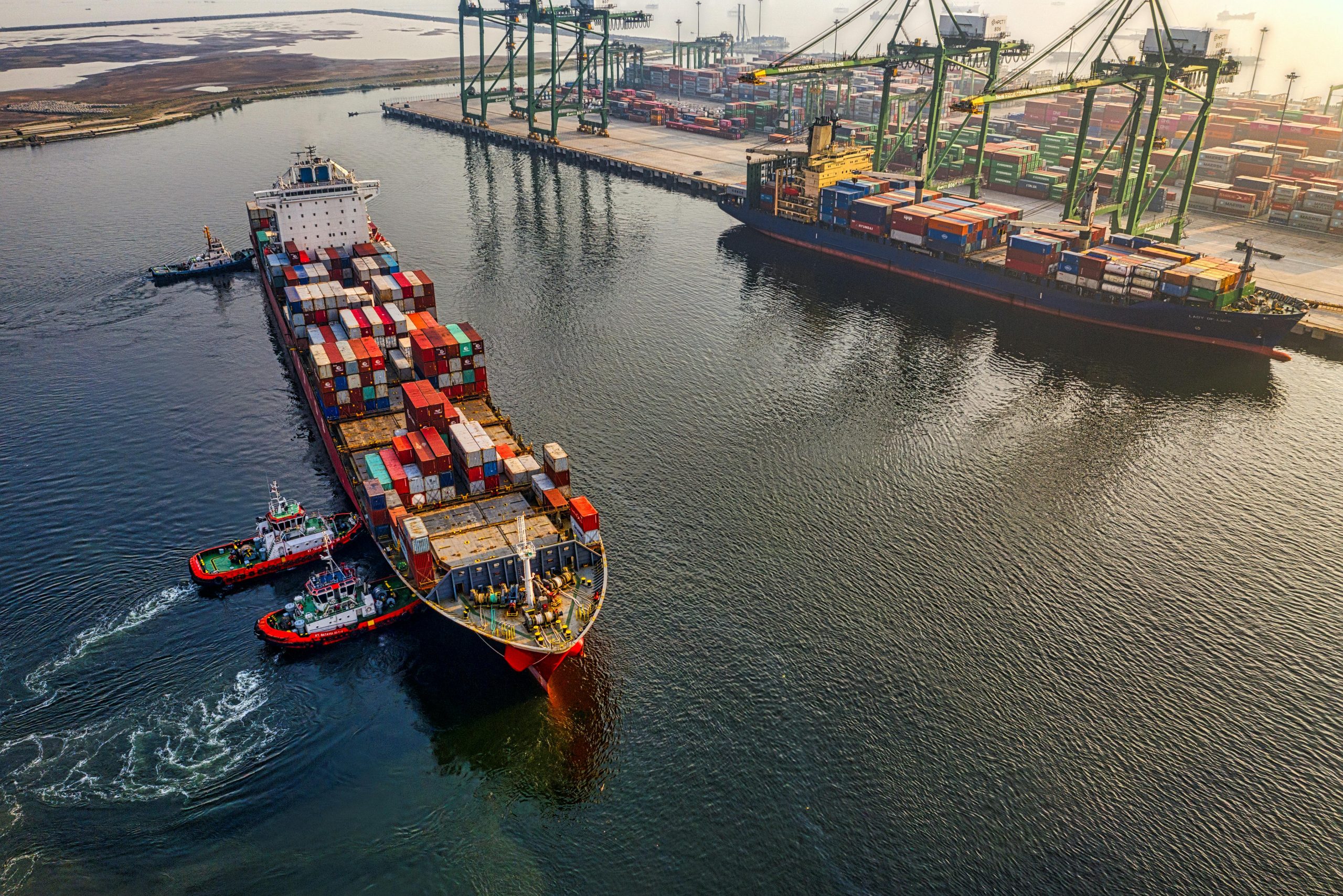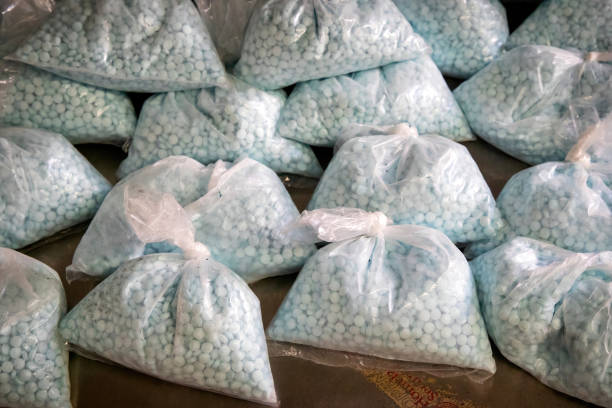By: Jimena Escalante Pérez
Member of the Department of Communication and Marketing
Bachelor's Degree in International Studies at UAM
In a matter of a few years, fentanyl has displaced other drugs, such as cocaine and marijuana, redefined the rules of drug trafficking, and raised alarms in diplomatic and security circles. This opioid has become the most visible face of a public health crisis in the United States. But beyond its lethality, this drug has unleashed a conflict between Mexico and the United States, which no longer revolves solely around drugs, but also involves disputes over sovereignty, failed binational cooperation, and an increasingly transnational economy.
This article explores how the so-called "war on fentanyl" is transforming bilateral relations, triggering new mechanisms of political pressure, and revealing the profound asymmetries between a consumer country in crisis and a producer country caught between internal violence and external demands.
What is fentanyl and why does it matter?
Fentanyl is a synthetic drug that is prescribed to patients with severe pain. It is approximately 100 times more potent than morphine and 50 times more potent than heroin, making it highly addictive and, in the event of an overdose, can lead to death[1]. Illegally, it is sold in powder form or disguised in eye drop containers, nasal sprays, or in pills similar to other prescription opioids. This illegal fentanyl is mixed with other drugs such as heroin, cocaine, MDMA; This ends up being especially dangerous for people who use drugs, since they do not know that the substance they consume contains fentanyl, due to its lack of odor which makes detection, and seizure, difficult tasks[2]. It is manufactured in low-cost and quick-install laboratories.
Routes, actors and transnational business
One of the reasons why United States President Donald Trump has imposed high tariffs on countries like Mexico, Canada and China is because, in his view, these countries allow the flow of fentanyl to the United States[3].
Fentanyl arrived in Sinaloa from China in 2013. According to Dámaso López Serrano, El Mini Lic, the base was brought from China, since its ingredients are largely produced by Chinese companies, but in Mexico it began to be manufactured in clandestine laboratories, mainly controlled by the Sinaloa and Jalisco cartels. The Mexican drug trafficker has ended up adapting: he no longer just sows, but now synthesizes. Already in 2014, the Sinaloa cartel invested approximately 350 thousand dollars in its manufacture and, in the United States, they sold it for twice as much money as in Mexico[4]You could say that fentanyl has turned cartels into geoeconomic, almost corporate, actors.
United States: public health crisis and diplomatic pressure
Despite its lethality, with more than 70,000 deaths annually due to overdose in the United States alone, there is still a high demand. This health emergency has become a priority issue for Washington's foreign policy. The flow of this opioid into United States territory is being interpreted as a threat that requires economic, diplomatic and even military responses.
According to analysts, the problem does not lie exclusively in the existence of Mexican cartels, but in the existence of mass and market consumption, since as long as there is such a broad base of consumers, it is inevitable that suppliers will emerge to satisfy this consumption.
A key fact that demystifies part of the dominant discourse in the United States is that the majority of people who bring synthetic opioids into the country are not illegal immigrants, as the Trump administration has suggested, but that the drug usually enters through legal ports of entry, mainly through California and Arizona, and that the traffickers are mostly American citizens, who are often used by cartels to act as fentanyl mules[3].
Still, the phenomenon has been politicized to the extreme. The MAGA movement has even proposed selective military attacks in Mexican territory to destabilize drug traffickers. This possibility was described as “absolutely unacceptable and contrary to international law” by Gerónimo Gutiérrez, ambassador in Washington during Trump's first presidency, who warned that such an action would represent a major blow to the countries' important bilateral relationship[5].
In February of this year, Trump designated eight criminal groups, including the Sinaloa cartels, Jalisco Nueva Generación, the Zetas, the Nueva Familia Michoacana among others, as terrorist organizations. This categorization was seen as a possible precedent for the use of US military force. In fact, recent reports indicate that the CIA has deployed MQ-9 Reaper drones for surveillance missions. However, the ability of these drones to carry weapons raises concerns about possible escalation. If carried out without the formal permission of the Mexican government, it would be considered a violation of Mexican sovereignty, with direct implications in the field of international law[6].
Mexico: sovereignty and violence
For a long time, the Mexican strategy to combat organized crime has focused on attacking cartel leaders in order to weaken their control over large areas of the territory. However, this policy has had counterproductive effects, since instead of reducing violence, it has caused the fragmentation of the cartels into smaller, more disorganized and violent groups[7].
A recent example illustrates this phenomenon: in July 2024, Ismael “El Mayo” Zambada, leader of the Sinaloa cartel, was captured in US territory, sparking a conflict that left at least 600 dead. This figure adds to an alarming trend: Mexico registers an average of 100 homicides daily, linked to the violence generated by the fentanyl business[7].
At an operational level, the fight against fentanyl trafficking has intensified since the arrival of Claudia Sheinbaum to the presidency. Her administration has taken very drastic measures, leaving behind the “Hugs, not bullets” policy of former President Andrés Manuel López Obrador, who sometimes went so far as to deny that fentanyl was produced in Mexico. Mexican security forces have taken a much more aggressive approach: last December alone, more than a ton of fentanyl pills were seized, the largest seizure on record in the country.[8].
Since Donald Trump's inauguration in January, Sheinbaum has sought to contain diplomatic and media pressure. It has handed over 29 drug trafficking lords, it has deployed more than 10,000 military personnel on the border between both countries, it has seized historic numbers of this drug and it has allowed the US presence in its airspace, reducing trafficking by 64%, according to official data[9]. In exchange, the United States has committed to stopping arms trafficking to Mexico, a key element that has nourished the cartels.
However, Mexico continues to face major obstacles in demonstrating that it is meeting the demands of the new US administration, because fentanyl production is cheap, its transportation is difficult to detect and demand remains enormous[3].
Furthermore, drug money has transformed the economy of the northern states. The income generated by fentanyl trafficking has boosted businesses and energized seemingly legal sectors. But this “bonanza” has had a price: it has strengthened the structures of organized crime, perpetuating violence and undermining institutional efforts to constrain insecurity[10].
Conclusion
The war against fentanyl is not only waged in clandestine laboratories, but also at diplomatic negotiation tables, in political speeches and in parallel economic flows that cross the border. Unlike the anti-drug conflicts of the past, this new phase is marked by technological and chemical sophistication, the fragmentation of organized crime, and growing pressure from the United States.
Mexico, for its part, faces the challenge of containing an increasingly technical criminal industry, without losing control of its sovereignty or giving in to demands that often ignore the shared roots of the problem.
The question that remains open is whether both countries are willing to rethink the strategy, approaching the problem as a phenomenon that requires a joint, comprehensive and, above all, humane approach. Because, beyond the number of victims, fentanyl exposes the limits of a system that has not been able to adapt to new forms of transnational crime and inequality.
Bibliography
[1] Fentanyl
[2] El fentanilo – DrugFacts | National Institute on Drug Abuse (NIDA).
[3] Por qué es tan difícil detener el flujo de fentanilo en EE. UU. – The New York Times
[4] La producción de fentanilo está «más fuerte que antes», asegura «El Mini Lic» – Proceso
[7] Fentanilo: la clave de la guerra y de la paz entre Estados Unidos y México | EL PAÍS México
[8] ¿Cómo llega el fentanilo a Estados Unidos? Esto es lo que hay que saber – Proceso



Leave a Reply